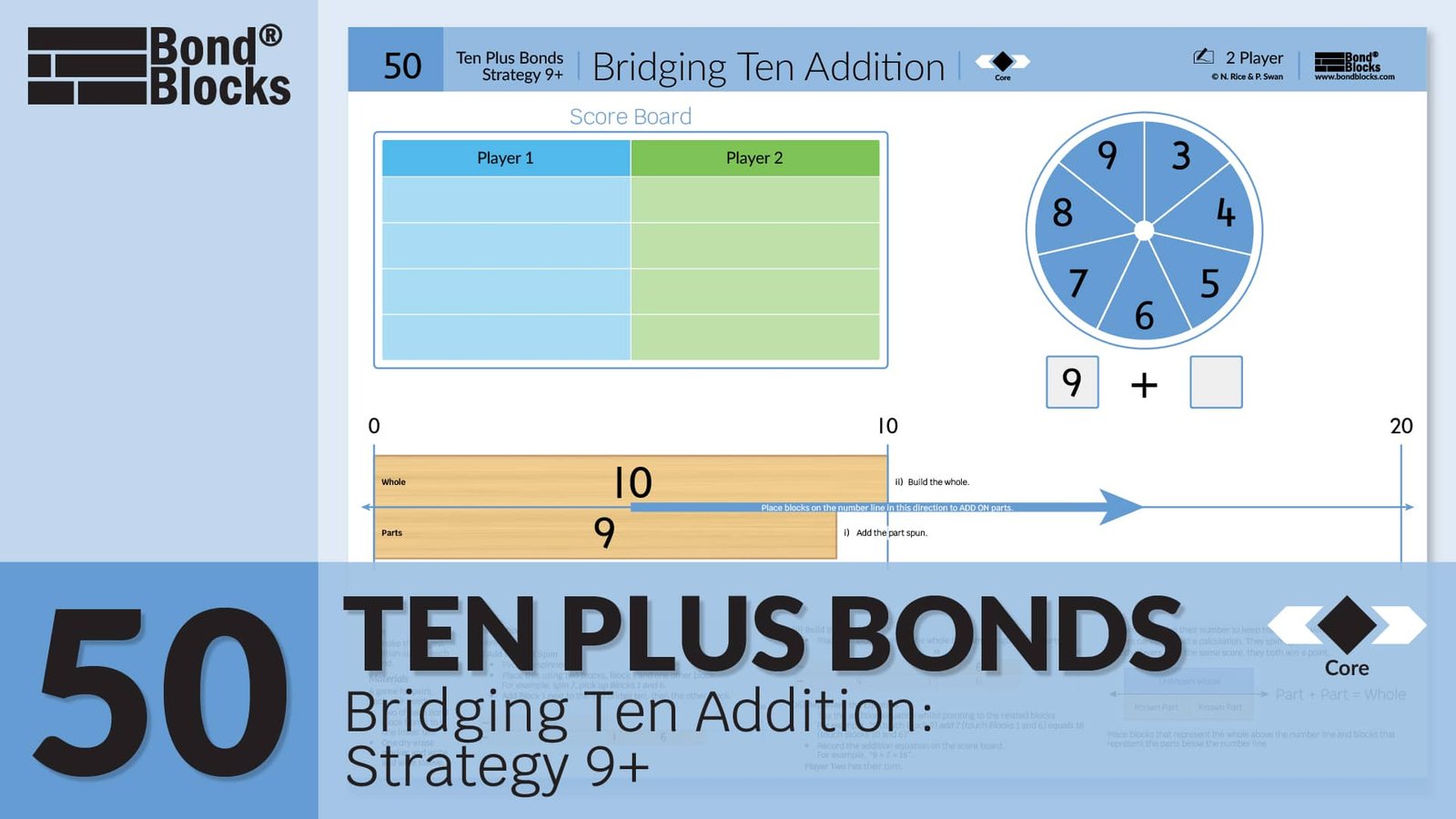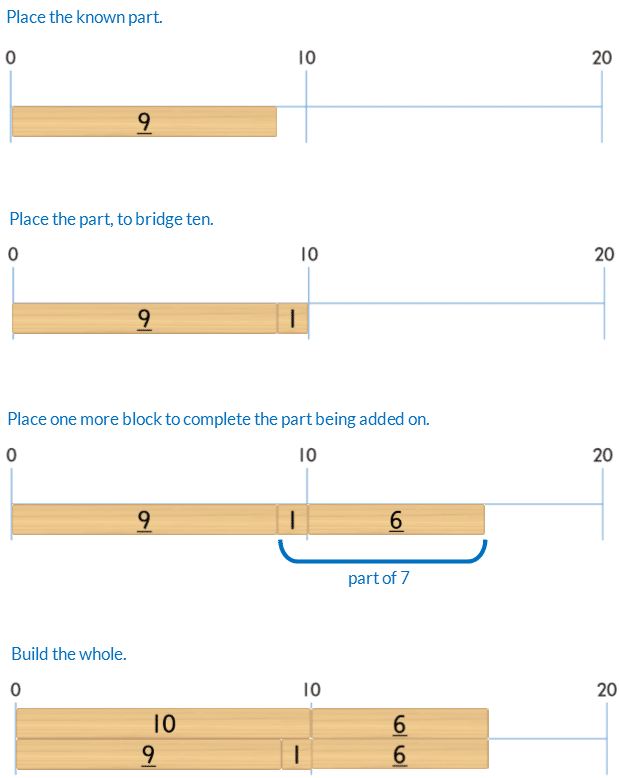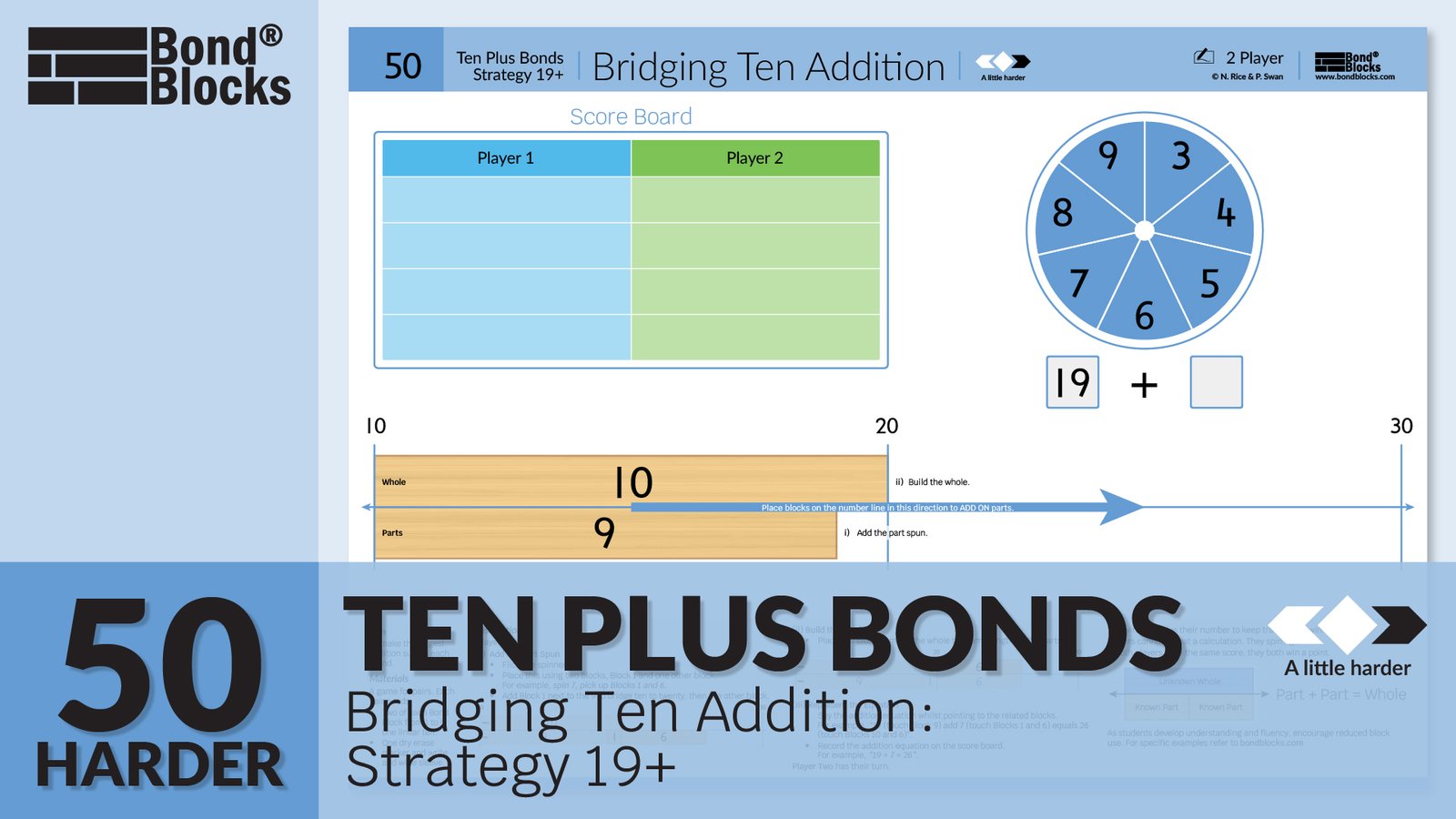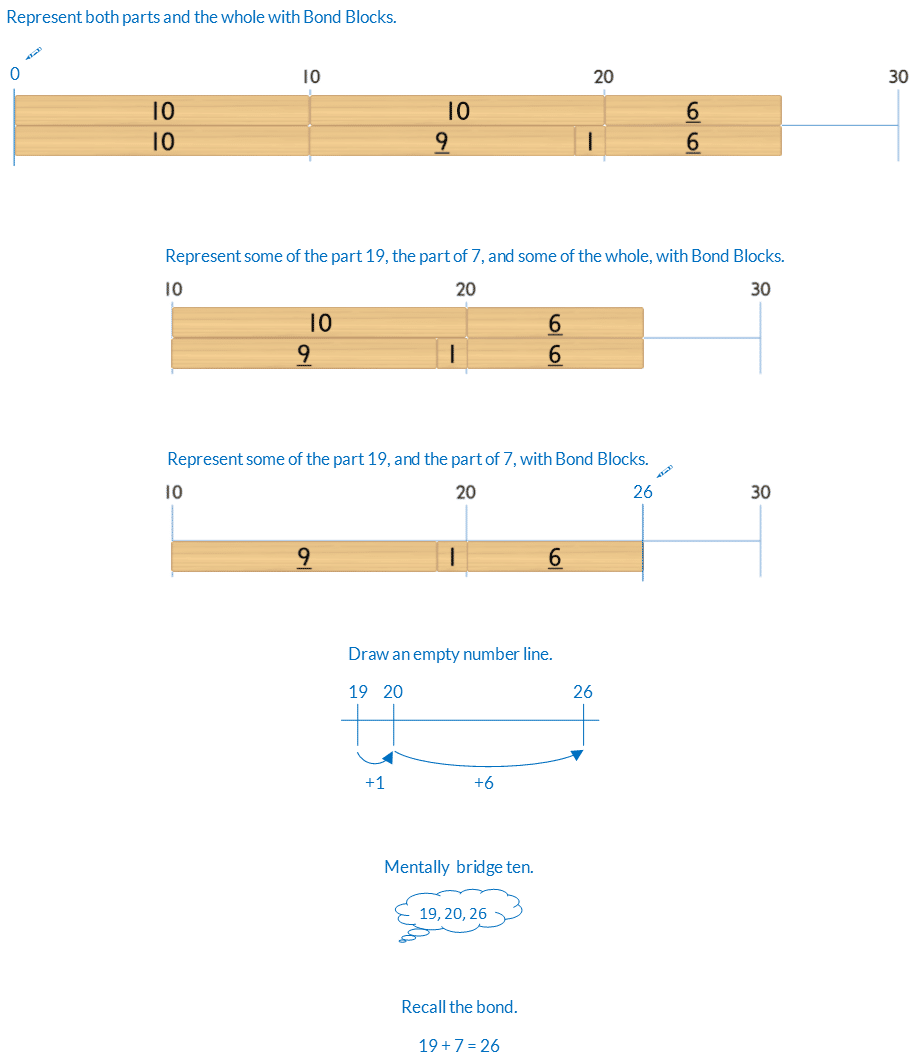50) Bridging Ten Addition
Ten Plus Bonds: Strategy 9+

Mathematics
Develop the addition strategy of bridging ten, from a part of nine, for wholes up to 20.
For example, to solve 9 + 7

Prior knowledge of part-part-whole, bonds of 10 and place value partitioning using ten plus bonds is needed.
Language
- bridge ten
- add
- equals
- sum: the total resulting from addition

Differentiation
A little easier
Scaffold: counting order
Calculate each question in counting order, working clockwise around the spinner, from the 12 o’clock position. Do not flick the spinner. Assist students to identify patterns.
Sequence: step by step
If students have difficulty partitioning the second part, into one plus another part, use an additional block.
For example, to model 9+7

Some students find it conceptually easier to first place the 9 and 7 blocks. Then place the 1 and 6 on top of the 7 block.
- From a top view they can see the bridging ten partition, 9 + 1 + 6.
- From a front view they can see the parts of 9 and 7.

A little harder
Bridging ten addition strategy 19+
Play “Ten Plus Bonds: Bridging Ten Addition Strategy 19+ a little harder”. In this game students have to bridge ten, to twenty, from a part of 19, for wholes up to 30.

Reduce Scaffolds
The blocks are a scaffold to support calculation. If students can calculate without some or all of the blocks encourage this. Below is a progression of reducing scaffolding, from most to least support, using bridging ten for 19 + 7.

Progression
In the next activity students extend bridging 10 to adding a part of 8. Go to
Activity 51
Ten Plus Bonds: Bridging Ten Addition, Strategy 8+
